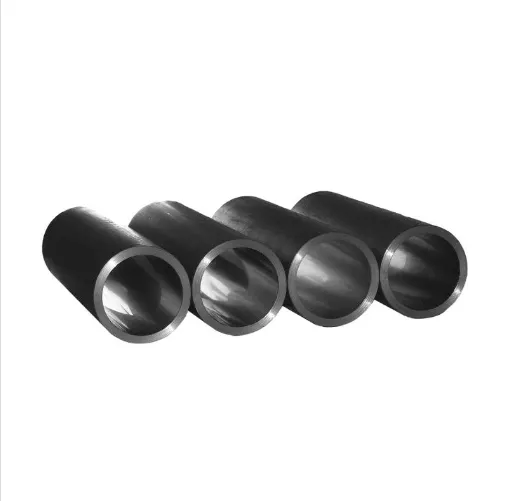Essential Components of a Car and Their Functions Explained
Nov . 06, 2024 11:27
Understanding the Main Parts of a Car
Cars have become an integral part of modern society, providing mobility and convenience to millions of people worldwide. However, the complexity of a car often goes unnoticed by the average user, as most people simply focus on driving. Understanding the main parts of a car can enhance one’s appreciation for this remarkable machine and provide useful knowledge for maintenance and repairs.
1. Engine
At the heart of every car lies the engine, often referred to as the powerhouse. The engine converts fuel into mechanical energy, enabling the vehicle to move. There are various types of engines, including internal combustion engines (ICE), which use gasoline or diesel, and electric engines powered by batteries. The efficiency and power of a car largely depend on the engine’s design, size, and type. Engines consist of several components, including pistons, cylinders, and the crankshaft, each playing a vital role in the combustion process.
2. Transmission
The transmission is responsible for transferring power from the engine to the wheels. It allows the car to change gears, optimizing speed and torque for different driving conditions. There are two main types of transmissions automatic and manual. Automatic transmissions engage shifts without driver intervention, while manual transmissions require the driver to shift gears using a clutch pedal and gear selector. A well-functioning transmission is crucial for a smooth driving experience.
3. Chassis
The chassis is the framework of the vehicle, providing structural support for all other components. It includes the body, the frame, and the suspension system, which plays a crucial role in ride quality and handling. The suspension system consists of components like springs, shock absorbers, and struts, helping to absorb bumps and maintain tire contact with the road. A strong chassis ensures durability and stability, essential for safety and performance.
4. Braking System
Safety is paramount in automotive design, and the braking system is one of its most critical components. Cars typically use disc brakes or drum brakes to slow down or stop the vehicle. The braking system comprises several parts, including brake pads, rotors, calipers, and brake lines. When the driver presses the brake pedal, hydraulic pressure is activated, transferring force to the brakes to slow the wheels. Ensuring that the braking system is well-maintained is vital for safe driving.
car main parts
5. Electrical System
Modern cars are equipped with sophisticated electrical systems that control various functions, from engine management to entertainment systems. The electrical system includes the battery, alternator, starter motor, and wiring harness. The battery provides the initial power to start the engine and run accessories when the engine is not running. The alternator recharges the battery while the engine is running. Understanding the electrical system can help in troubleshooting problems such as a dead battery or flickering lights.
6. Fuel System
The fuel system is responsible for delivering the right amount of fuel to the engine for combustion. This system consists of the fuel tank, fuel pump, fuel filter, and fuel injectors. In gasoline engines, fuel injectors spray a fine mist of fuel into the combustion chamber, where it mixes with air for burning. In diesel engines, the fuel is injected directly into the combustion chamber under high pressure. Regular checks and maintenance of the fuel system can ensure optimal engine performance and fuel efficiency.
7. Exhaust System
The exhaust system is critical for managing emissions and noise produced by the engine. It routes exhaust gases away from the engine and reduces harmful pollutants before they are released into the atmosphere. Key components of the exhaust system include the catalytic converter, muffler, and exhaust pipes. The catalytic converter converts harmful gases into less toxic substances, while the muffler reduces noise. A well-functioning exhaust system ensures compliance with environmental regulations and contributes to a quieter ride.
8. Tires
Finally, tires are the only point of contact between the vehicle and the road. They play a vital role in handling, braking, and fuel efficiency. Tires come in various sizes and types to suit different vehicles and driving conditions. Regular tire maintenance, including rotation, balancing, and pressure checks, is essential to ensure longevity and safety. A good set of tires can significantly improve a car’s performance and fuel economy.
Conclusion
A car is a complex machine with many interconnected parts, each playing a unique role in its operation. Understanding the main components of a car not only improves knowledge about automotive technology but also helps drivers make informed decisions regarding maintenance and repairs. By taking care of these essential parts, drivers can ensure their vehicles run smoothly and safely for years to come.
 Afrikaans
Afrikaans  Albanian
Albanian  Amharic
Amharic  Arabic
Arabic  Armenian
Armenian  Azerbaijani
Azerbaijani  Basque
Basque  Belarusian
Belarusian  Bengali
Bengali  Bosnian
Bosnian  Bulgarian
Bulgarian  Catalan
Catalan  Cebuano
Cebuano  Corsican
Corsican  Croatian
Croatian  Czech
Czech  Danish
Danish  Dutch
Dutch  English
English  Esperanto
Esperanto  Estonian
Estonian  Finnish
Finnish  French
French  Frisian
Frisian  Galician
Galician  Georgian
Georgian  German
German  Greek
Greek  Gujarati
Gujarati  Haitian Creole
Haitian Creole  hausa
hausa  hawaiian
hawaiian  Hebrew
Hebrew  Hindi
Hindi  Miao
Miao  Hungarian
Hungarian  Icelandic
Icelandic  igbo
igbo  Indonesian
Indonesian  irish
irish  Italian
Italian  Japanese
Japanese  Javanese
Javanese  Kannada
Kannada  kazakh
kazakh  Khmer
Khmer  Rwandese
Rwandese  Korean
Korean  Kurdish
Kurdish  Kyrgyz
Kyrgyz  Lao
Lao  Latin
Latin  Latvian
Latvian  Lithuanian
Lithuanian  Luxembourgish
Luxembourgish  Macedonian
Macedonian  Malgashi
Malgashi  Malay
Malay  Malayalam
Malayalam  Maltese
Maltese  Maori
Maori  Marathi
Marathi  Mongolian
Mongolian  Myanmar
Myanmar  Nepali
Nepali  Norwegian
Norwegian  Norwegian
Norwegian  Occitan
Occitan  Pashto
Pashto  Persian
Persian  Polish
Polish  Portuguese
Portuguese  Punjabi
Punjabi  Romanian
Romanian  Samoan
Samoan  Scottish Gaelic
Scottish Gaelic  Serbian
Serbian  Sesotho
Sesotho  Shona
Shona  Sindhi
Sindhi  Sinhala
Sinhala  Slovak
Slovak  Slovenian
Slovenian  Somali
Somali  Spanish
Spanish  Sundanese
Sundanese  Swahili
Swahili  Swedish
Swedish  Tagalog
Tagalog  Tajik
Tajik  Tamil
Tamil  Tatar
Tatar  Telugu
Telugu  Thai
Thai  Turkish
Turkish  Turkmen
Turkmen  Ukrainian
Ukrainian  Urdu
Urdu  Uighur
Uighur  Uzbek
Uzbek  Vietnamese
Vietnamese  Welsh
Welsh  Bantu
Bantu  Yiddish
Yiddish  Yoruba
Yoruba  Zulu
Zulu 












